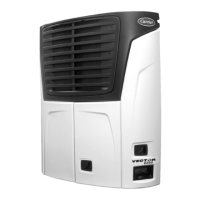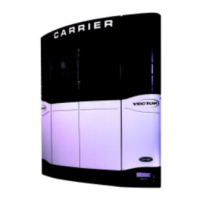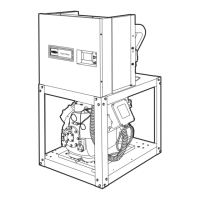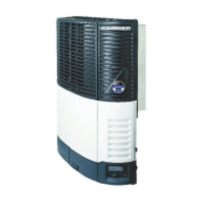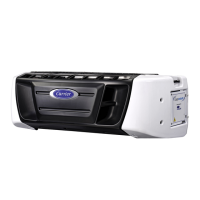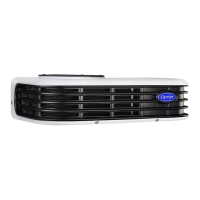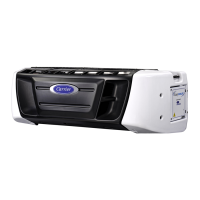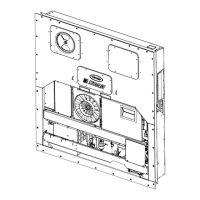62-61753-21
2.13 COMPONENT RESISTANCE & CURRENT DRAW DATA
Unloader/Economizer/Liquid Injection Solenoid
Valves
12VDC Relay 10-00328-00 (CDCON, EVCON,
GPR, HTCON2, SSR,
12VDC Relay 10-00433-01 & -06 (CCON,
GENCON, HTCON1, PSCON, PSCON2)
12VDC Relay 10-00385-00 (CCONR, GENCONR,
HTCON1R, PSCONR)
White-Black wires: Can not be accurately measured with Coil Commander in circuit.
Unit non-running amps (Refer to Note 2 in Section 7.2)
Less than 1 ohm but more than 0
2.14 SAFETY DEVICES
System components are protected from damage caused by unsafe operating conditions by automatic shut-down of
the unit when such conditions occur. This is accomplished by the safety devices listed in the following table.
Excessive current draw by microprocessor
Excessive current draw by speed relay
Excessive current draw by run relay
Excessive current draw by battery output
Excessive current draw by control circuit
Excessive current draw by battery charger input
Opens at 3 amps (6 amps with
second battery charger)
Excessive current draw by generator/power supply
contactors
Excessive current draw by heaters
Excessive condenser fan motor winding temperature
Excessive compressor motor winding temperature
Excessive evaporator motor winding temperature
2.15 REFRIGERANT CIRCUIT DURING COOLING
When cooling, the unit operates as a vapor compres-
sion refrigeration system. The main components of the
system are: the (1) scroll compressor, (2) air-cooled
condenser, (3) evaporator expansion valve, (4) direct
expansion evaporator and (5) economizer circuit.
The refrigeration system will operate in one of four
modes; Standard, Bypass, Economized or Null.
At start, and during periods of high refrigeration sys-
tem load, the system will operate in the bypass mode.
This allows the microprocessor to place the system in
operation at reduced capacity and measure the actual
load. If additional capacity is required and power is
available, the system will transition to the Standard
Mode. If the microprocessor calculates addition capac-
ity is required and power is available (such as periods
of high load or during pull-down), the system will tran-
sition to Economized Mode.
a. Bypass Mode
In bypass mode, (see Figure 2-9), the compressor
raises the pressure and the temperature of the refrig-
erant and forces it into the condenser tubes. The con-
denser fan circulates surrounding air over the outside
of the condenser tubes. The tubes have fins designed
to improve the transfer of heat from the refrigerant gas
to the air. This removal of heat causes the refrigerant
to liquify. Liquid refrigerant leaves the condenser and
flows to the receiver.
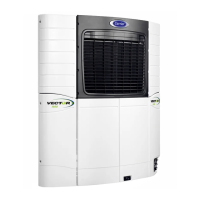
